Sometimes paintings conservators like Stefan Dedecek of McKay Lodge Conservation Laboratory must inpaint a crack to make a painting look intact. This was the case with a work of art, Femme Incantant, 1945 by famous artist Jean Dubuffet. The painting was recently treated at our conservation lab facilities just outside of Cleveland, Ohio in Oberlin.
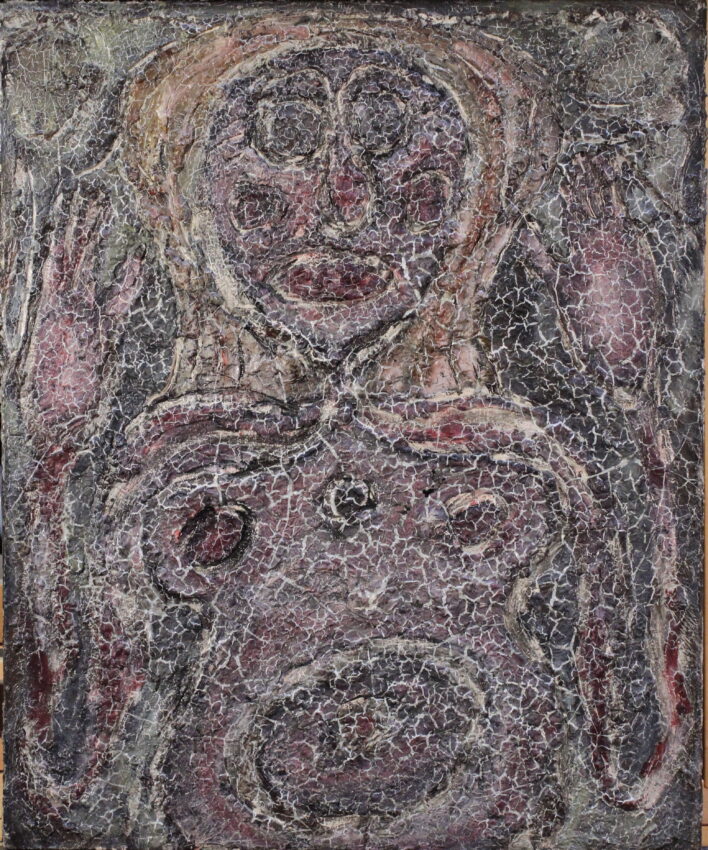
Femme Incantant by Jean Dubuffet was in stable condition; however, it suffered from overall traction craquelure and other effects of aging.
According to the artist’s Wikipedia page, Jean Philippe Arthur Dubuffet, was a “French painter and sculptor. His idealistic approach to aesthetics embraced so-called “low art” and eschewed traditional standards of beauty in favor of what he believed to be a more authentic and humanistic approach to image-making.”
The words hardly begins to describe Dubuffet’s unique work which ranges from small paintings such as Femme Incantant to Jardin d’émail, 1974 a sprawling walled garden made of concrete and fiberglass at the Kröller-Müller Museum in the Netherlands.
While the conservation treatment of Femme Incantant might not have been as complicated as the conservation treatment of Jardin d’émail, it had its challenges. Dubuffet’s painting Femme Incantant was executed in 1945, and it is an early example of his work.
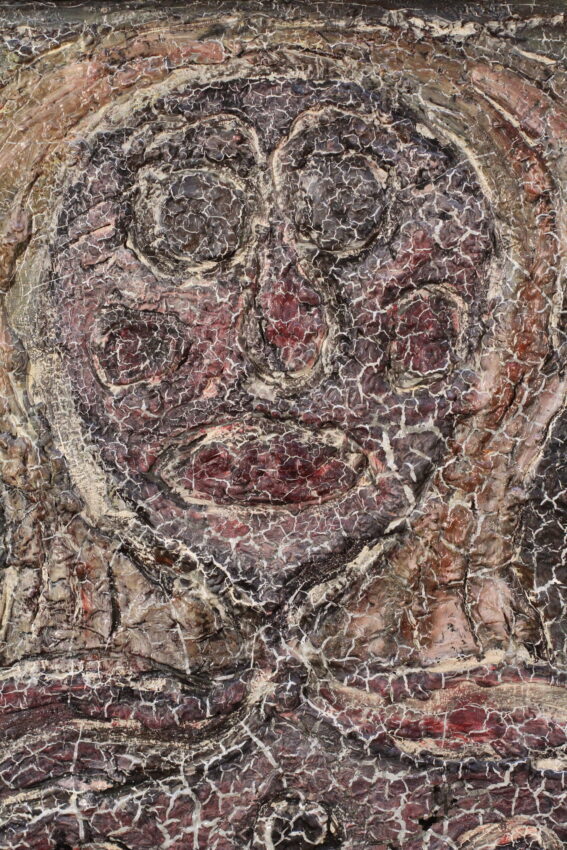
Conservator Dedecek explains the unique landscape of the painting:
“The heavy texture, almost a 3-D sculptural form itself, was not built up by paint impasto, but with a so-called off-white ‘Swedish Putty’ first. That was followed by a rather thin paint application. As the painting aged, the wide cracks appeared which exposed the off-white Swedish Putty underneath.”
The putty itself remained stable and never cracked or pulled away, and only the paint suffered the traction craquelure which has become visually disruptive. It should also be noted that despite the paint film’s considerable weight, the canvas support was not distorted.
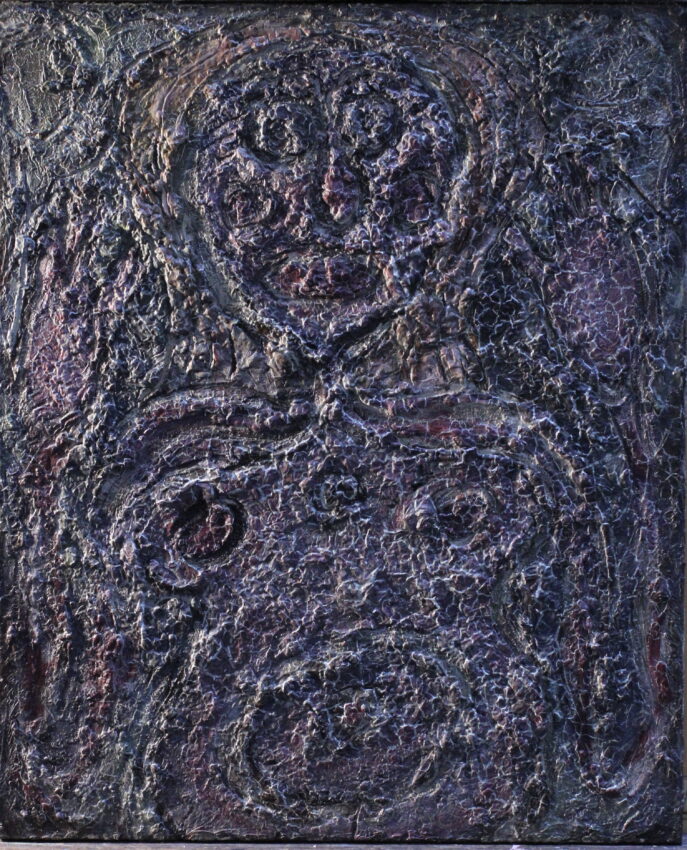
This is what gives the painting its unique, but perhaps, not intended appearance. With age, dust and dirt accumulation also muted the colors of the painting. The artwork required conservation treatment to re-harmonize its appearance.
For the conservation treatment of Femme Incantant by Jean Dubuffet, the surface accumulation of dirt and dust was first reduced with various cleaning mixtures. This greatly improved the overall color and appearance of the painting, but more intervention, such as inpainting, was needed.
Conservator Dedecek carefully considered the overall image and forms. He would of course employ reversible materials for the conservation treatment of Femme Incantant by Jean Dubuffet; however, there was a question of how much to inpaint the traction craquelure. It was a critical consideration so that the appearance was improved, but the age value and artist’s working methods were also maintained.
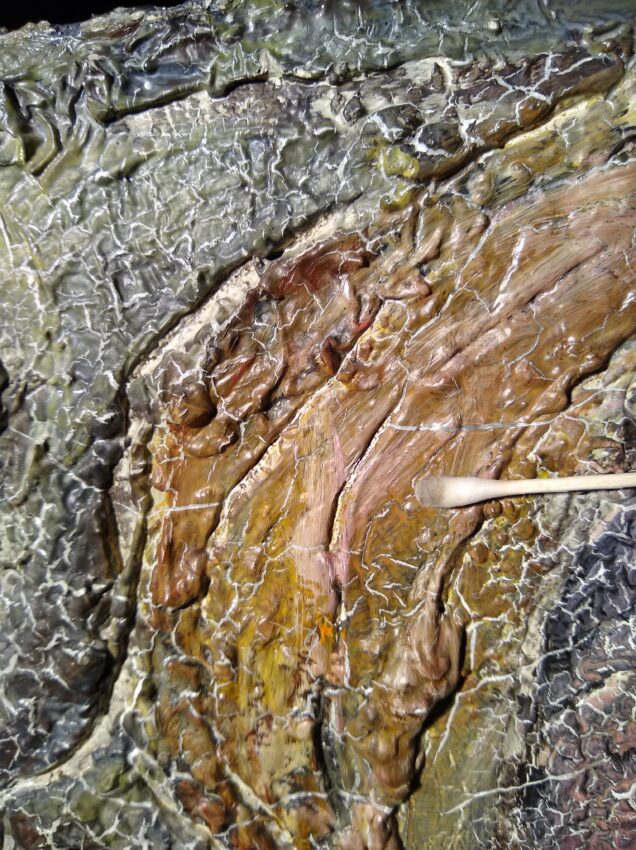
Carefully and one by one, Conservator Dedecek selectively addressed the wide open crack pattern. The time consuming, but necessary task, allowed the painting to become revitalized with respect to its age.
The front of the painting is not the only thing that received conservation treatment. Once the extant backing board was removed, an inscription was found on the reserve of the canvas. The artist’s name, title and the date of 1945 in black cursive were discovered. Interestingly, the title reads “nu rougeâtre” or reddish nude.
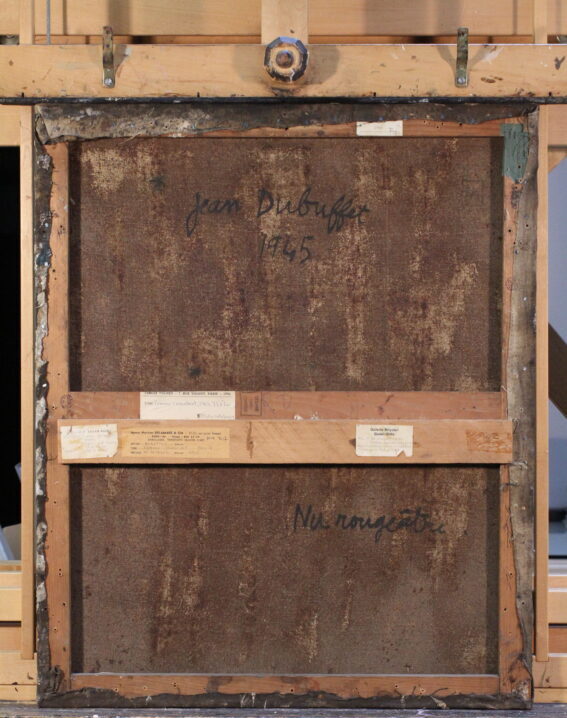
The alternative title and inscription were documented, but then safely covered with a new archival and removable backing board. The numerous exhibition labels were recovered from reverse of the old backing board and encapsulated in a Mylar. New hanging hardware was also added.
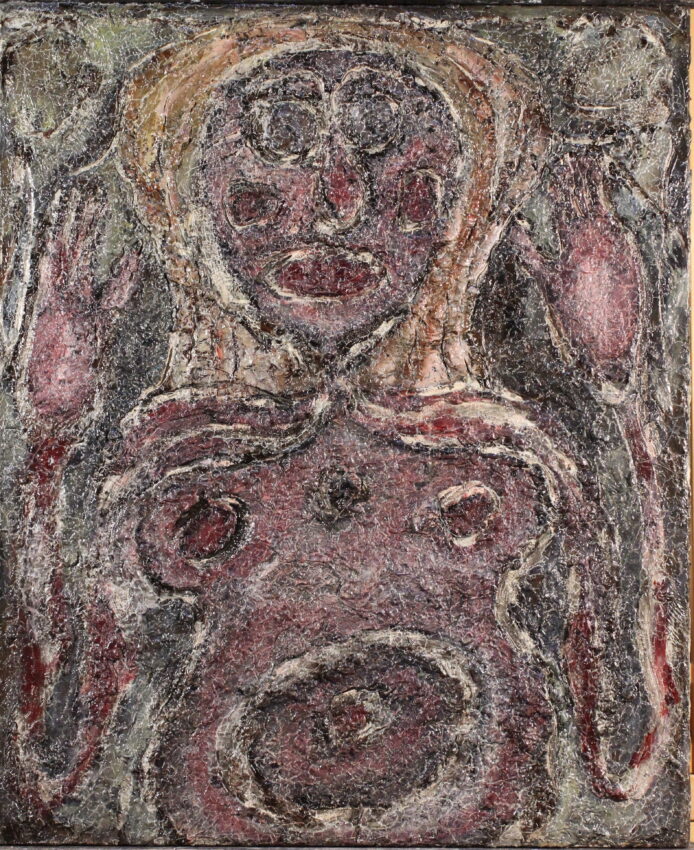
After the conservation treatment of Femme Incantant by Jean Dubuffet the cracks were, in fact, intact. Reduction of the surface dirt restored the colors, and the traction craquelure was selectively inpainted to minimize its impact on the subject matter, creating a clearer, more colorful image overall of the female nude.
